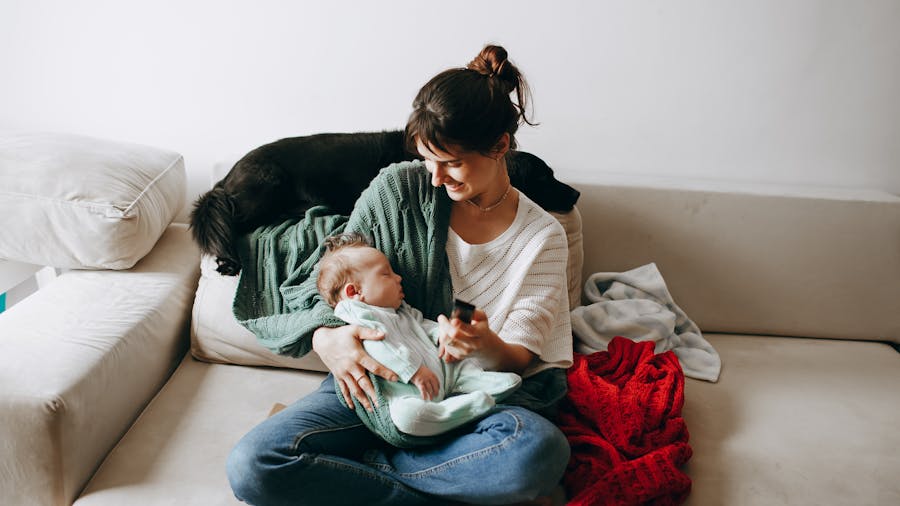Great Pyrenees, known for their gentle nature and protective instincts, can make wonderful family companions. However, integrating these large, independent dogs into a household with children requires careful consideration and proper management. This comprehensive guide will help you navigate the joys and challenges of raising a Great Pyrenees in a family environment.
Understanding the Great Pyrenees Temperament
Great Pyrenees are renowned for their calm and patient demeanor, making them excellent companions for families with children. These gentle giants have a natural affinity for kids and are instinctively protective of their human family members. However, it's important to recognize their unique characteristics:
- Independent thinkers: Great Pyrenees were bred to work independently, which can sometimes be mistaken for stubbornness.
- Low-energy: Despite their size, they are not highly active dogs and prefer a calm home environment.
- Protective instincts: They are natural guardians and may be wary of strangers or unfamiliar animals.
Understanding these traits is crucial for successfully integrating a Great Pyrenees into your family life.
Preparing Your Home for a Great Pyrenees
Before bringing a Great Pyrenees into your home, it's essential to prepare your living space:
- Create a quiet space: Provide a designated area where your Great Pyrenees can retreat when they need rest or alone time.
- Secure your yard: Ensure your yard is well-fenced to prevent wandering, as Great Pyrenees have a tendency to roam.
- Puppy-proof: Remove potential hazards and valuable items that a curious puppy might chew on.
- Invest in proper equipment: Purchase a sturdy harness and leash for walks, as well as appropriate-sized food and water bowls.
Introducing Your Great Pyrenees to Children
The introduction process is crucial for establishing a positive relationship between your Great Pyrenees and your children:
- Supervise all interactions: Always be present during initial meetings and ongoing interactions.
- Teach children proper behavior: Educate your kids on how to approach and interact with dogs respectfully.
- Allow the dog to initiate contact: Let your Great Pyrenees approach the children when they feel comfortable.
- Encourage gentle interactions: Show children how to pet the dog softly and avoid rough play.
Training Your Great Pyrenees Around Children
Proper training is essential for ensuring harmonious coexistence between your Great Pyrenees and children:
- Start early: Begin training and socialization as soon as you bring your Great Pyrenees home.
- Use positive reinforcement: Great Pyrenees respond best to gentle, reward-based training methods.
- Establish clear rules: Set consistent boundaries for both the dog and children to follow.
- Teach basic commands: Focus on essential commands like "sit," "stay," and "leave it."
- Involve children in training: Encourage kids to participate in training sessions under adult supervision.
Managing Daily Life with a Great Pyrenees and Children
Integrating a Great Pyrenees into your family's daily routine requires thoughtful planning:
- Exercise needs: While not highly active, Great Pyrenees still require daily walks and playtime.
- Grooming: Involve children in brushing sessions to bond with the dog and maintain their coat.
- Feeding: Establish a regular feeding schedule and teach children not to disturb the dog during meals.
- Sleeping arrangements: Decide whether your Great Pyrenees will sleep in a crate, dog bed, or with family members.
Health Considerations for Great Pyrenees in Family Homes
Maintaining your Great Pyrenees' health is crucial for a happy family life:
- Regular vet check-ups: Schedule annual examinations and stay up-to-date on vaccinations.
- Monitor weight: Great Pyrenees can be prone to obesity, so maintain a balanced diet and exercise regimen.
- Be aware of common health issues: Familiarize yourself with breed-specific concerns like hip dysplasia and bloat.
- Teach children to recognize signs of discomfort: Educate your kids on how to identify when the dog might need space or medical attention.
Addressing Common Challenges
Even with proper preparation, you may encounter some challenges:
- Barking: Great Pyrenees are known for their vocal nature. Teach a "quiet" command and provide mental stimulation to reduce excessive barking.
- Shedding: Regular grooming can help manage their heavy shedding, especially during seasonal changes.
- Independence: Consistent training and positive reinforcement can help manage their independent streak.
- Size management: Teach children how to safely interact with a large dog to prevent accidental knocking over or stepping on.
Conclusion
Raising a Great Pyrenees in a family with children can be an incredibly rewarding experience. These gentle giants offer unwavering loyalty, protection, and affection. By understanding their unique needs, providing proper training, and fostering positive interactions between your Great Pyrenees and children, you can create a harmonious and loving family environment.
Remember, every dog is an individual, and patience is key when integrating a Great Pyrenees into your family life. With the right approach, your Great Pyrenees can become a cherished family member, offering years of companionship and joy to both adults and children alike.
Referenced Sources
- https://baileyscbd.com/blogs/dog-breeds/great-pyrenees-and-kids-canine-temperament
- https://www.petmd.com/dog/breeds/great-pyrenees
- https://vetcareanimalhospital.com/client-resources/breed-info/great-pyrenees/
- https://www.carecredit.com/well-u/pet-care/great-pyrenees-dog-breed/
- https://itsdogornothing.com/beginners-guide-great-pyrenees-info/
